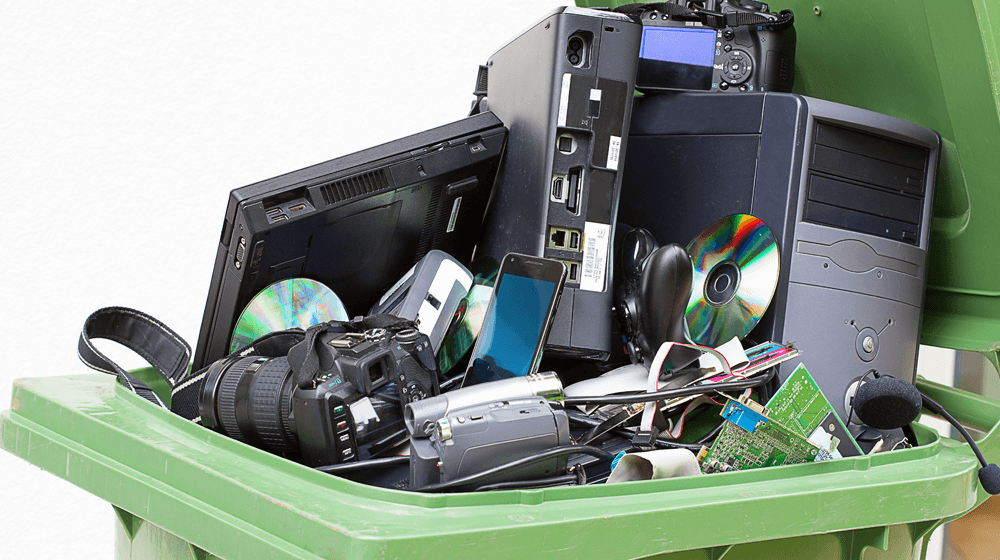Artificial Intelligence (AI) has been making waves for several years, and for good reason – it’s fundamentally changing industries across the board. Some people have even gone as far as to call it the “biggest disruptor to the global economy since the last industrial revolution.”
However, with most of the news about AI focussed on its ability to make good (and bad) artwork, it’s forgivable to write off this technology as irrelevant to the waste management industry. Quite to the contrary, recycling using AI is not only possible, it’s already happening.
As our CEO Greg Lettieri says, “we continue to see how AI will change the waste and recycling industry. As more haulers and cities utilize IOT sensors and technology, there is a natural progression to dynamic routing, less truck traffic and higher recycling rates.”
What Exactly is “AI”?
Before delving into how AI recycling can aid more sustainable waste management, it’s important to clarify what exactly AI is. The conversation around Artificial Intelligence has been going on since the birth of computers, with Alan Turing himself (the father of modern computing) asking “Can machines think?”. But, without having to wade through the complexities of that debate, we can turn to a much simpler definition:
AI is, according to Oxford Reference, “The theory and development of computer systems able to perform tasks normally requiring human intelligence, such as visual perception, speech recognition, decision-making, and translation between languages.”
While explicit interaction with AI – such as text-to-image generators – is relatively new, AI has been powering our lives for decades in products like search engines and Siri. What’s more, many consumer-facing products – like Google Translate – may be AI-powered, but since they aren’t branded as such, it falls largely unnoticed.
The element of Artificial Intelligence that is most relevant to AI in waste management is “visual perception” – specifically, being able to recognize different recyclable products and contaminants.
AI Recycling for Mixed Waste Streams
One of the most notable uses of AI for recycling is for the identification and separation of waste through visual perception.
Single-stream recycling seemed like a dream when it was introduced in the 90s and it is partially responsible for the jump in recycling rates from the 1980s to the early 2000s. It allows consumers to mix all recyclable goods, making it convenient and easy. However, this comes at a cost – contamination and separation.
This has become more of an issue in recent years after countries that once bought much of the United States’ recyclables introduced stricter stipulations for the waste they import. For example, China, which had been one of the major destinations for much of the West’s plastic waste, decided it would no longer take foreign waste in 2017, banning 24 types of solid waste and setting a contamination threshold of 0.5% of what could still be delivered.
Enter AI, which is able to reduce contamination by sorting and separating waste more consistently, and is able to do so at a lower cost. One such example, from AMP Robotics Corp, combines computer vision and deep learning with high-speed robotics which, according to the company, can pick upwards of 80 items per minute, double that of a person, and with no risk of injury.
Smart Sensors
Another exciting opportunity for recycling and AI is the use of smart sensors to manage waste where it is collected. These are AI-powered sensors tied into the Internet of Things (IOT), and in waste management are specifically used as fill-level sensors.
Fill-level sensors are able to monitor the amount of waste in a bin in order to help determine whether a collection is necessary. This means waste is collected only when necessary, resulting in fewer trucks on the road and for less time. This saves costs, and more importantly, reduces the emissions related to waste management.
Furthermore, while smart sensors mean trucks will only go out when necessary, AI for waste management can improve them further through route optimization software, which can help set the most efficient pickups in real-time.
Our newest solution, Pello, does just that.
AI for Recycling on a Smaller Scale
AI is great for large-scale sorting facilities or smart sensors on dumpsters, but we are also seeing these technologies being applied on a smaller scale to stop contamination at the point of disposal. For example, the newly-created Trashbot is an AI recycling machine designed to replace a traditional recycling bin, such as you’d find in offices, university campuses, etc.
Similar to the AI recycling technology in sorting centers, this smart bin has a single point of disposal and diverts recyclables into the correct bins inside using computer vision, machine learning and robotics. It does so with 95% accuracy and removes the possibility of human error when disposing of individual items.
What are the Benefits of AI in Waste Management?
After looking over some of the ways in which AI is being used in waste management, we are able to draw out several key benefits that it can provide. First, it can save money by reducing overheads such as the number of trucks that go out. Second, it can boost turnover by reducing contamination resulting in higher-grade recycled products.
Additionally, AI recycling can reduce the need for people to carry out potentially dangerous tasks, such as sorting e-waste, which often has toxic chemicals. Of course, this does open up the debate about what this would mean for jobs in waste management.
Finally, AI in waste management can help create more efficient, easier-to-use, and cheaper recycling systems, which could boost recycling rates. This will help reduce the amount of waste pollution in our water, air and soil while also reducing the need for virgin resources to be extracted, and the pollution related to that.
RTS Has an AI Solution – It’s Called Pello
Pello is technology that offers a real-time monitoring system for waste management. By providing instant updates and notifications on a user-friendly dashboard, Pello enables users to efficiently track bin capacity, address waste requirements, and prevent overflow, contamination, and unnecessary expenses.
With the help of Imaging AI and accurate fullness data, Pello achieves over 95% accuracy in identifying pickups, resulting in operational efficiencies, cost savings, timely payments, and a reduction in greenhouse gas emissions by eliminating unnecessary hauls.
To learn more about how to leverage technology for more sustainable waste management for your business, get in touch with one of our expert TRUE advisors at RTS. To read more information on recycling and other sustainable waste management topics subscribe to the RTS blog.

